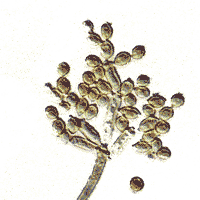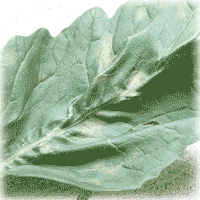
More Articles
Cladosporium is one of the most common mold types worldwide. It almost always found to be the most plentiful of airborne mold spores outside.
Cladosporium is found under normal condition in the soil of a number of different types, old plants, and plant litter. It can also be a plant pathogen.
Indoors Cladosporium can grow on a wide variety of materials including moist It is a cold- tolerant mold so is often found inside air conditioning systems and can grow on refrigerated foods. It is often found growing on ventilation system supply diffusers and on un-insulated plaster walls due to condensation.

On building materials, Cladosporium is often a secondary invader following Penicillium and/or Aspergillus. With a continuation of high levels of moisture, they can all be overgrown by Stachybotrys or possibly Chaetomium, particularly if there is high cellulose content of the substrate.
Spores are relatively easy to distinguish from other types but are widely variable in size and shape. Spores have dark areas where they were attached to other spores of underlying structures. Some have olive to brown pigmentation.
Industrial uses include the transformation of steroid intermediates and hormones used in the production of oral contraceptives.

What's the harm?
While certain individuals can develop allergies to virtually any mold, research shows that Cladosporium species are known to cause a number of specific allergies. Some of the more familiar health effects related to Cladosporium include asthma, hay fever and hypersensitivity pneumonitis (an allergic reaction to breathing in some substances that cause inflammation of the lungs). Some allergies have names that are specific to certain activities. A couple of these are: Hot tub lung and Moldy wall hypersensitivity.
Cladosporium is not generally pathogenic, but one species located in tropical and sub-tropical areas can cause Chromoblastomycosis, which is a long term infection of the skin or tissues below the skin, which is often introduced by splinters or thorns. It is reportedly rarely fatal, but difficult to cure.
This mold type does produce two known toxins, but they are not very potent.






